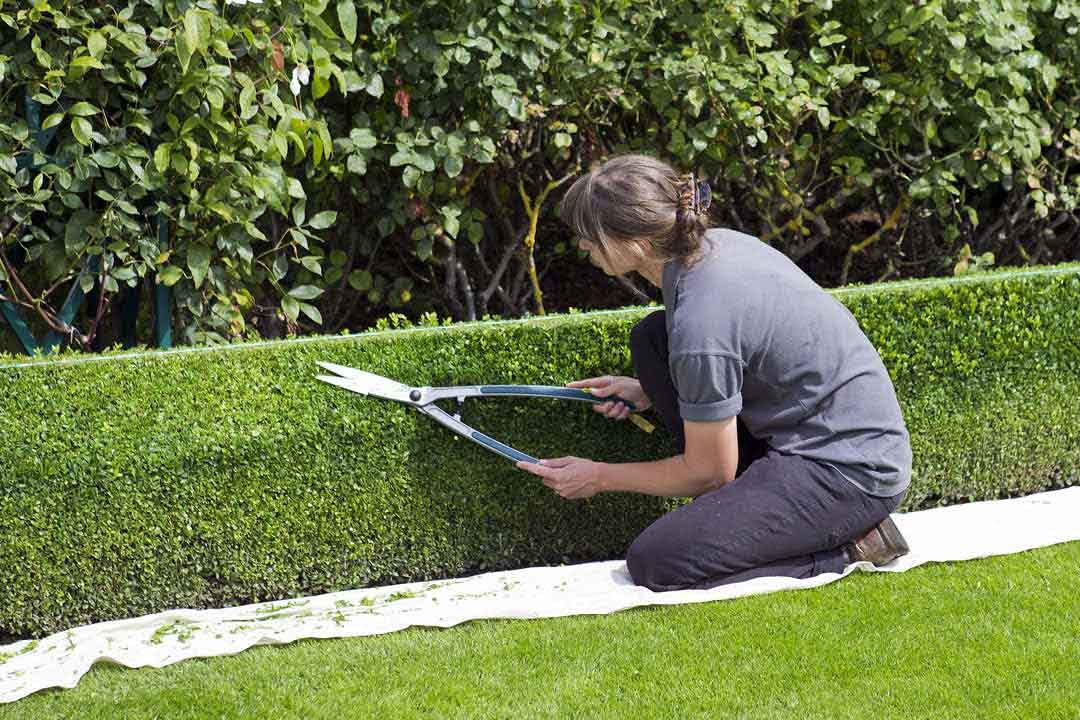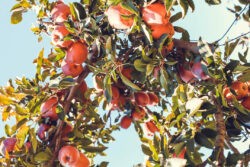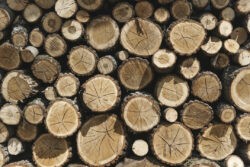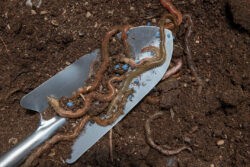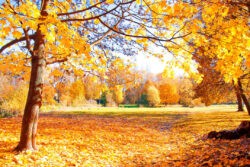Ask anyone what their ideal garden would feel like and the phrase ‘low-maintenance’ will likely be high on the list. Maybe even ‘no-maintenance’ from those with little garden knowledge. Does this type of garden exist? In the latter example, the answer is an easy ‘no’. But low-maintenance is definitely achievable. It’s largely down to the choice of plants, building materials and ratio of lawn or paving to beds and borders. But even amongst those things, there are sensible low-maintenance options.
No digging
Take the ‘no-dig’ method of gardening, for example. It works equally well within the kitchen garden and the allotment in addition to the leisure space. It is exactly as it sounds. Gardening without digging. This allows mycorrhizal networks of fungi to spread. Plants require less water and fertiliser because the fungi, in effect, extend the root system of plants so that they have a wider area in which to source nutrients and moisture. It’s good for the environment as the soil develops better drainage. It also contains more carbon and is less prone to lose nutrients in water runoff during rainy periods. The aim is to leave as much of the soil undisturbed as possible. You can add mulch to the soil, when required (early winter is best). Remove perennial weeds when you see them. Plant directly into the soil – you will be surprised how quickly things become established and start growing. This is because their root system has been extended by the mycorrhizal fungi.
Mind the gaps
It’s important to fill any blank soil spaces with plants to prevent weeds from growing. Nature fills a void! Plan ahead and be ready to plant something as soon as the space becomes available.
Right plant, right place
Plant shrubs for the easiest gardening experience, but be sure to select wisely. A plant in the wrong place will always need attention, and a plant that is too large for the space will require frequent pruning. If you’re not sure what type of plants are suited to the soil in your area, take a look at your neighbour’s gardens. Evergreens provide year-round interest, but they are not necessarily those with the most interesting flowers. Don’t be tempted to plant something that requires damp conditions into a bright, dry flower bed, or vice versa. Watering is a high-maintenance requirement, as are weeding and deadheading. Gardening is a balance between practical solutions and aesthetic interest, and much of your choice will be based on personal preference.
What about the lawn?
Some say that a lawn represents the most intensive maintenance requirement of any garden feature which explains why artificial grass has become so popular. But contrary to popular belief, fake lawns are not completely maintenance-free. Weed seeds will eventually take hold and weeding a lawn of this nature is not easy! Artificial turf also requires washing, on occasion, especially when used as a toilet by dogs and cats. Artificial grass is an emotive topic and there is still a lack of scientific knowledge and a shortage of research when it comes to assessing the environmental impact of such a relatively new product.
However there’s no doubt that professionally installed artificial turf will cut down on maintenance when compared to a living lawn that requires regular mowing. The lack of biodiversity on a fake lawn is an obvious drawback, but some say that we should view them as another non-living component of a garden, similar to a patio.
For those who are determined to have one, a slight compromise can be found by increasing the size of planting beds, thereby adding to the number of plants in the garden.
Hard landscaping
The advice is to buy the best you can afford. Steps and patios need to be non-slip and this can be achieved by keeping everything clear of debris and algae. Better quality materials are generally less porous and will therefore absorb less moisture. This in turn will reduce the speed that algae will grow. Sweep away leaves so that little has chance to seed into organic matter.
Gravel works well in some areas but it is rarely a low-maintenance solution. Weeds tend to seed easily into the mix and gravel itself has a tendency to spread into surrounding areas. Resin-bound or bonded gravel gives a few years of relatively maintenance-free wear, but even this will eventually play host to algae and small weeds.
by Caroline Knight
